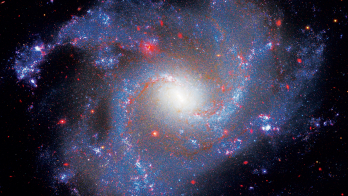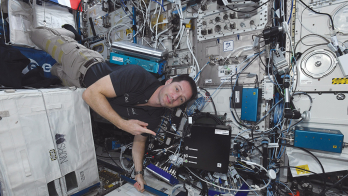Some of the universe’s most luminous objects might not be as bright as they seem. A recent study suggests that around a third of high-redshift quasars may have their emission magnified by a factor of 10 or more through gravitational lensing by galaxies along the line of sight.
Quasars release huge amounts of energy, outshining galaxies of hundreds of billions of stars, from a space the size of our solar system. They are thought to be powered by the accretion of gas onto supermassive black holes in their centre. Extremely bright quasars have recently been found with redshifts of up to 6.28. As luminosity is proportional to mass, some of these bright quasars are expected to house black holes with masses more than a few billion times greater than the sun’s.
The number of these enormous black holes, so soon after the Big Bang, poses a problem for models of structure formation. If gravitational lensing does amplify the emission of distant quasars to such an extent, some of these problems would be allayed.
Gravitational lensing typically produces multiple images of a source, as well as magnifying it. These images are expected to be so close together in the sky that new observations using the Hubble Space Telescope or a large ground-based telescope will be needed to test the theory.





